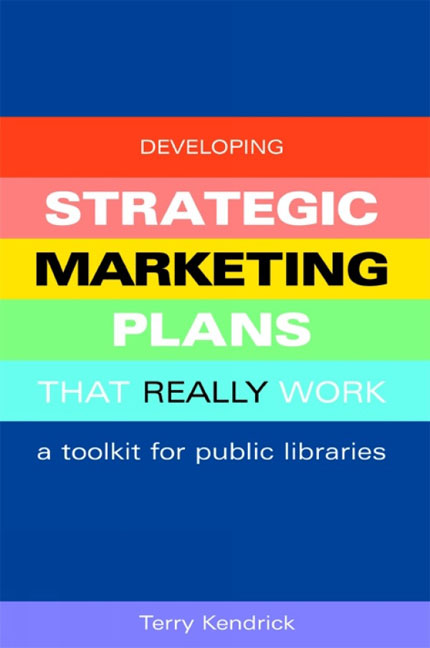Book contents
- Frontmatter
- Contents
- Acknowledgements
- Introduction
- 1 Strategic marketing planning for public libraries: an introduction
- 2 Ambition as the basis for marketing planning
- 3 Making sense of the market for public library services
- 4 Creating segment-specific value propositions for users and non-users
- 5 Priorities: making sound choices
- 6 Clear objectives and winning strategies
- 7 Attention-grabbing marketing communications
- 8 Implementation and quick progress
- Appendix Twenty fast-track templates
- Select bibliography
- Index
6 - Clear objectives and winning strategies
Published online by Cambridge University Press: 08 June 2018
- Frontmatter
- Contents
- Acknowledgements
- Introduction
- 1 Strategic marketing planning for public libraries: an introduction
- 2 Ambition as the basis for marketing planning
- 3 Making sense of the market for public library services
- 4 Creating segment-specific value propositions for users and non-users
- 5 Priorities: making sound choices
- 6 Clear objectives and winning strategies
- 7 Attention-grabbing marketing communications
- 8 Implementation and quick progress
- Appendix Twenty fast-track templates
- Select bibliography
- Index
Summary
By the end of this chapter you will have identified objectives by segment and service-wide. You will also have considered the development of marketing strategies and offers for internal stakeholders, external users and non users. The chapter highlights traditional marketing-mix approaches – an expanded four-P to six-P model – and more modern relationshipmarketing approaches to strategy.
Having segmented the market (Chapter 4) and decided on priority segments (Chapter 5) and their contribution towards the meeting of quantified marketing objectives and ambition (Chapter 2), it is now time to create marketing strategies to achieve those objectives.
Marketing objectives
Objectives are the ‘what’ we want to achieve, and strategies are the ‘how’ we will achieve those objectives. Marketing objectives, like all other objectives, should be SMART – specific, measurable, achievable, realistic and time-specific. Given that they are measurable, marketing objectives in public libraries will relate to items such as issues, visits, enquiries, income generation, website hits or similar. If the objective is to increase awareness or develop the brand, this should be accompanied by pre- and postcampaign measurement. A vague ‘objective’ to increase awareness is not a good basis for a marketing strategy.
By studying the picture of our options clearly drawn on the DPM (Chapter 5) it is possible to make decisions on priority actions. In other words, when we look at the relative attractiveness of our segments (y-axis of the DPM) in the context of the strength of our offer to each of those segments (x-axis), then it is possible to identify where our efforts are most likely to have impact and where our efforts are likely to fall by the wayside. In addition we should be able to make some estimate of the amount of return possible from each of these segments. Later in this chapter we will discuss the strategies for achieving that return, but at this point it is sufficient to identify some forecast returns for effort. In reality as we consider budget and strategy these objectives will go through a number of iterations until an objective is agreed.
Objectives can either be at service-wide level or segment level. It is best to have both. Remember that objectives are not scientific but are a desired state. Consider your objectives for the planning period.
- Type
- Chapter
- Information
- Developing Strategic Marketing Plans That Really WorkA Toolkit for Public Libraries, pp. 106 - 136Publisher: FacetPrint publication year: 2006



